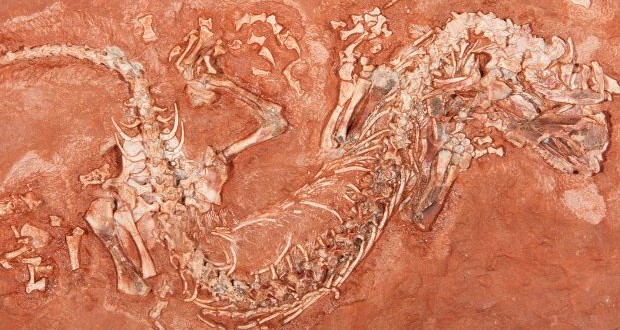A fossil of a lizard-like creature found by a young boy on a Prince Edward Island beach is a new species and the only reptile in the world ever found from its time, 300 million years ago, a new study shows.
Sean Modesto, a professor of biology at Cape Breton University, said it’s one of the most complete reptile fossils of the Carboniferous era.
“This specimen is really rare,” said Modesto, who was the principal investigator of the project. “It’s the only specimen we know of from this particular part of the Carboniferous and it’s the only reptile from that slice of time.”
The research will be published in the journal Proceedings of the Royal Society B on Wednesday.
Modesto said the fossil was discovered by a boy and his family on their farmland in Prince County, P.E.I., more than 14 years ago. It was taken to the Royal Ontario Museum in 2004 and about four years ago, Modesto and his team started their research.
The fossil, erpetonyx arsenaultorum, was named after the Arsenault family who made the discovery.
Modesto said the fossil is very well-preserved, with its bones retaining their relative positions to each other.
He said it’s the closest and oldest relative ever found of a group of early reptiles called bolosaurids parareptiles.
The discovery indicates that reptiles at the end of the Carboniferous era were more diverse than previously suggested, said Modesto.
He said previous data showed that parareptiles had one ancestor that made it through the end of the Carboniferous era and that they only diversified in the following era, called the early Permian.
But the discovery increases the diversity of reptiles at the end of that era by 80 per cent, he said.
“This one specimen allows us to say, ‘Yes, reptiles aren’t these very mysterious animals right at the end of the Carboniferous. Here’s evidence that they’re actually more diverse than the fossil records indicate.”‘
If the erpetonyx arsenaultorum were seen scampering along the ground today, the animal would likely look like any generic reptile, walking on four legs equipped with claws, said Modesto. A photo of the fossil next to a ruler shows it is roughly 19 centimetres long.
Modesto, one of several researchers of the project, said it’s not surprising the fossil was discovered in the Maritimes.
“We have an incredible richness of fossils out here,” he said. “We have fossils that preserve animals from the Carboniferous right up to the early Jurassic.”
Agencies/Canadajournal

 Canada Journal – News of the World Articles and videos to bring you the biggest Canadian news stories from across the country every day
Canada Journal – News of the World Articles and videos to bring you the biggest Canadian news stories from across the country every day

